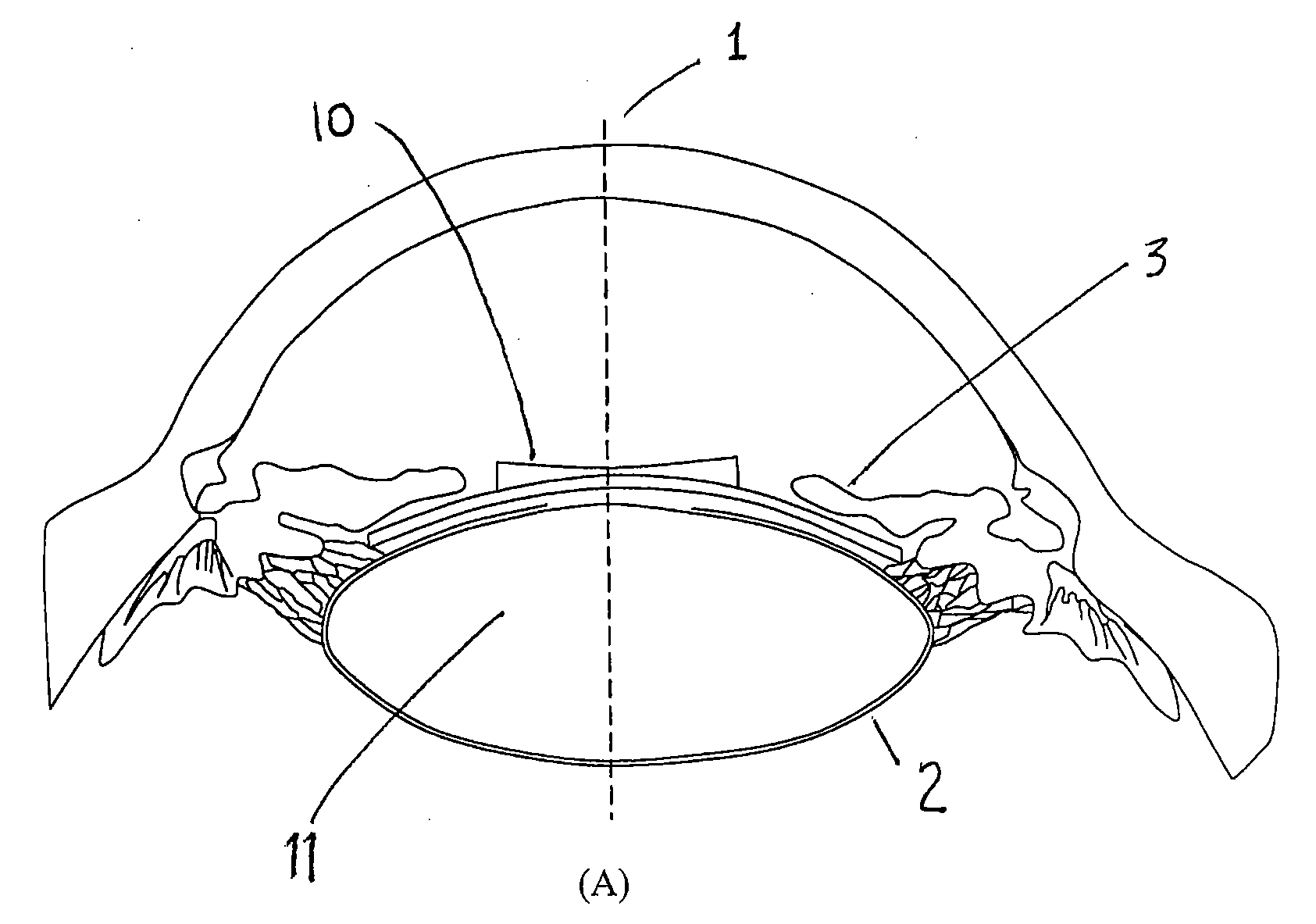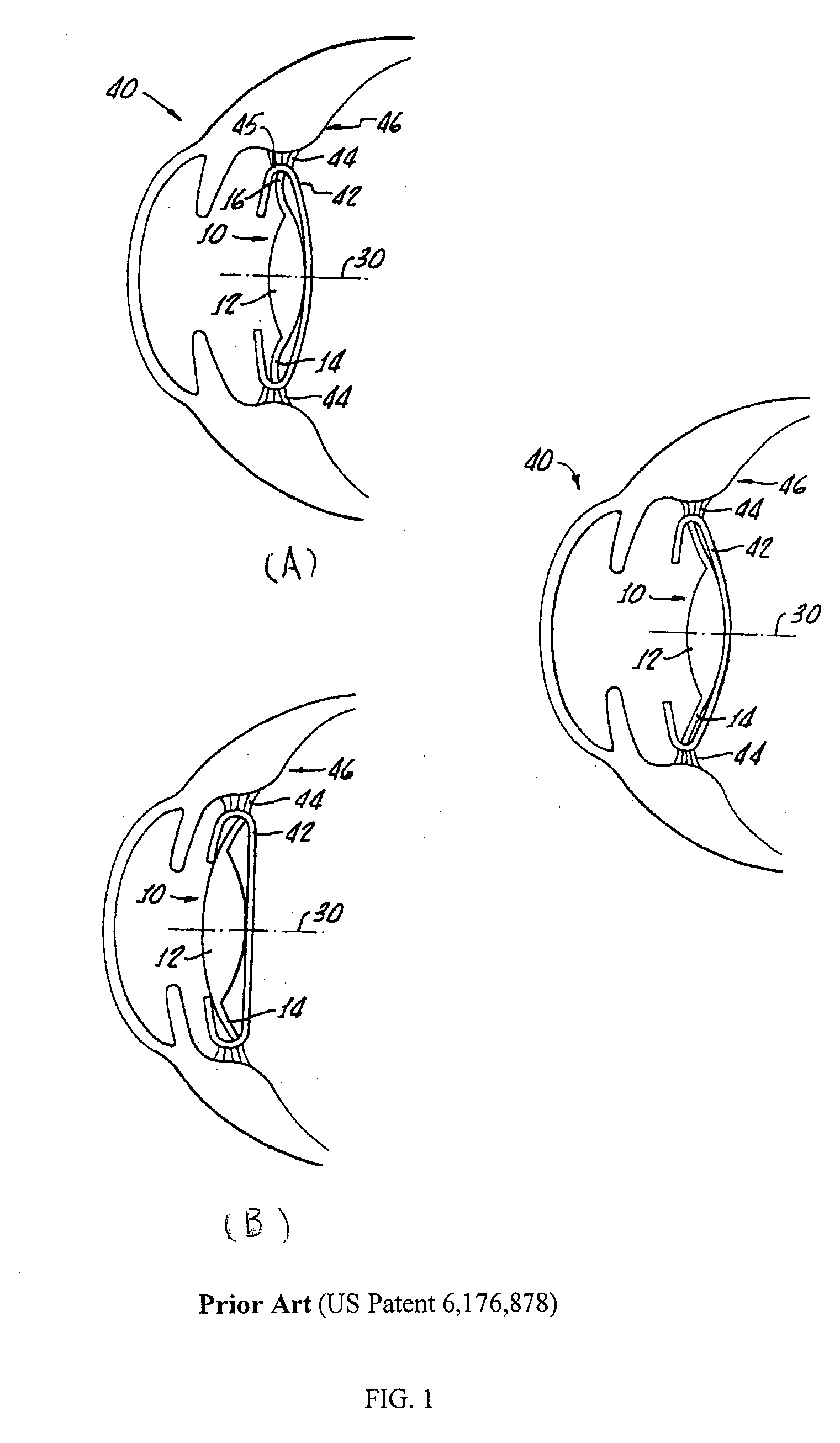Accommodative intraocular lens system
a technology of intraocular lens and ocular lens, which is applied in the field of intraocular lens, can solve problems such as loss of near vision, and achieve the effect of large separation and effective accommodation
- Summary
- Abstract
- Description
- Claims
- Application Information
AI Technical Summary
Benefits of technology
Problems solved by technology
Method used
Image
Examples
Embodiment Construction
[0029]“Anterior Chamber” is an anatomic term which defines the fluid-filled space between the iris and the innermost corneal surface (endothelium) of an eye. Anterior chamber depth is the distance between the iris and inner surface of the cornea typically in the range of about 2 mm to about 4 mm.
[0030]“Posterior Chamber” is another anatomic term which defines the space between the back of iris and the front face of vitreous of an eye.
[0031]“Full-sized IOL” is defined as an IOL with its optic body mimicking the natural crystalline lens, usually with its optic diameter in the range of 8 to 10 mm, preferably about 9 mm, while the central lens thickness is in the range of 2 to 5 mm, preferably about 3.5 mm.
[0032]“Phakic” means that the natural crystalline lens is still present in the eye. For example, a phakic IOL means an IOL which works together with the intact natural crystalline lens to correct refractive errors.
[0033]In one of the preferred embodiments of the present invention show...
PUM
 Login to View More
Login to View More Abstract
Description
Claims
Application Information
 Login to View More
Login to View More - R&D
- Intellectual Property
- Life Sciences
- Materials
- Tech Scout
- Unparalleled Data Quality
- Higher Quality Content
- 60% Fewer Hallucinations
Browse by: Latest US Patents, China's latest patents, Technical Efficacy Thesaurus, Application Domain, Technology Topic, Popular Technical Reports.
© 2025 PatSnap. All rights reserved.Legal|Privacy policy|Modern Slavery Act Transparency Statement|Sitemap|About US| Contact US: help@patsnap.com



